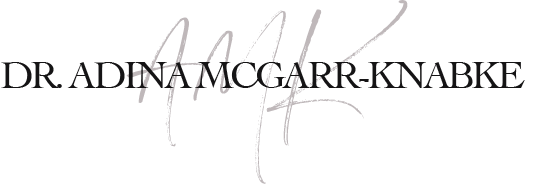


Alcoholism and Addiction
A significant percentage of my practice is comprised of individuals struggling with alcoholism and addiction. For most of these individuals, shame and guilt are pervasive, chronic, and destructive. Many individuals struggling with alcoholism and addiction are blamed by others and/or themselves for their lack of motivation and willpower. Unfortunately, the addictive process is much more complex than willpower and motivation alone.
An important part of the therapy I provide is increasing awareness and knowledge of the ways, in which, alcohol and drugs affect the brain. When working with individuals struggling with alcoholism and addiction, I provide a gross oversimplification of the neurophysiological aspects of alcoholism and addiction. I educate my clients about three different parts of the brain, the brainstem, sometimes referred to as the reptilian brain, the limbic system, also known as the mammalian brain, and the neocortex, aka the newest brain.
The brain stem is a knob of neural tissue sitting atop the spinal cord that controls breathing, swallowing, heartbeat, etc. (things that do not require consciousness). This is where we have our fight, flight, and freeze responses. Damage to this area results in death
The limbic brain is located over the brain stem and contains all the emotional and social generating aspects that allow for genuine attachments and feelings to occur. Damage to this area of the brain affects our emotions and abilities to attach to others. This part of the brain does not deal in reason or logic. For instance, we cannot direct our emotional lives, as we can our motor system to reach for a cup. If we are feeling so sad, it is not possible to will ourselves to be happy. This mid-brain area is also where our reward system is located. Our brains are so sophisticated that they are actually hard-wired (reward system) to ensure that we will repeat life sustaining activities, such as, eating, drinking, procreation, attachments, relationships. What happens in our brains when engaged in any of the above, is that dopamine (a neurotransmitter involved with feelings of pleasure, euphoria, motivation) among other neurotransmitters, is released, which on a non-conscious level informs our brains that this activity is important, must be remembered, and most importantly repeated. The result is that we are drawn automatically, unconsciously towards these natural rewards, as our brains equate these things with survival. The reward system is important to understand, as this is the system that drugs of abuse exploit and why cravings occur.
The neocortex is the seat of consciousnesses and of complex cognitive processes like perception, reasoning, abstract problem solving, learning, decision making and motor control. When we are emotionally regulated, this part of the brain is able to function efficiently and effectively. If we become dysregulated, which involves the limbic brain, the neocortex is impaired in functioning (i.e. Logic may go out the window, consequences do not matter, will power is compromised). Research states that the limbic region of the brain is the one that calls the shots and that the entire neocortex continues to be regulated from the paralibimbic regions from which it evolved (Lewis, Amini, & Lannon, 2000).
Alcohol and drugs enter the picture as they target the reward system in the limbic brain and cause unnatural amounts of dopamine to be released. Dopamine is the neurotransmitter of salience (signaling survival importance and reward prediction), which is why food, sex, relationships, and quenching thirst are all dopamine releasing behaviors. However, these natural rewards produce 1-½ times the normal baseline of dopamine, while some drugs can produce up to 10 times (amphetamines) the normal baseline, alcohol (2 times) cocaine 3.5 times, nicotine 2.5 times. This may result in alcoholism and addiction, as the user is driven on a non-conscious level to continue drug seeking and using. The user’s brain has now associated the drug with survival.
Unnatural spikes in dopamine raise the pleasure threshold, meaning that activities that were once reinforcing or pleasurable no longer even register, hence we are unmotivated to do those things. To complicate matters, our brains do not tolerate unnatural amounts of dopamine, so the brain actually decreases the dopamine available via decreased synthesis, decreased receptor sites and increased reuptake enzymes. The result is that less dopamine is available, making it difficult for the user to experience any pleasure in life, unless he/she is using. Eventually, even taking drugs will not result in the user feeling pleasure, however, the drugs is needed to prevent painful withdrawal symptoms and just to feel okay. In addition to dopamine alterations, serotonin and opioids in the brain are decreased, resulting in anhedonia, compulsivity, perseveration, pain, depression, etc.
Alcoholism and addiction cause an extreme state of stress in the brain, which triggers the stress aversion system in the brain. When the brain is under stress it releases corticotropin-releasing factor
(CRF), which unconsciously signals the user to seek out the reward system to cancel out the stress system. Since the pleasure threshold in the reward system has been altered, natural rewards will not suffice, motivating the user to take the drug to experience pleasure and respite from stress. Taking the drug provides initial relief, but again is stressful to the brain and so the cycle continues. Continued drug use produces a chronically over stimulated stress response.
The above information provides a simplistic explanation regarding brain functioning in individuals suffering from alcoholism and addiction. The intent was not to provide a comprehensive account of the neurophysiology involved, but rather to help decrease shame and guilt in those who feel that their lack of morality and willpower are their Achilles heel.

Why Do We Need Fat In Our Diets
Fat, often erroneously, is mistaken as the “enemy” and many try to avoid eating it at all costs. We all need fat in our diets, however, it should comprise no more than 25-30% of our daily caloric intake.
FAT IS NECESSARY FOR:
Normal growth and development
Energy (fat is the most concentrated source of energy)
Absorption of certain vitamins (vitamins A, D, E, K, and carotenoids)
Maintaining cell membranes
Providing taste, consistency, and stability to foods
Fat helps food stay in the stomach longer, helping one to feel satiated and to prevent hunger soon after meals
Fat may help your body produce endorphins (natural substances in the brain that are responsible for feelings of pleasure)
Diets too low in fat may trigger cravings
Provides back up energy if one has to go 4-6 hours without food
Provides insulation under the skin from the cold and the heat
Protects organs and bones
Fat surrounds and insulates nerve fibers to help transmit nerve impulses (nerve impulses are necessary for thoughts, emotions, behaviors, movements, etc.)
Fat is used by the body to make other building blocks needed for hormones and immune functioning
WHAT HAPPENS IF I DON’T HAVE ENOUGH FAT IN MY DIET
Harder to feel satiated, which may lead to continued eating
Dry, scaly skin
Hair loss
Low body weight
Cold intolerance
Bruising
Poor growth
Lower resistance to infection
Poor wound healing
Loss of menstruation

Carbohydrates
Carbohydrates have become almost as evil, in some people’s minds, as fat, making it “in vogue” to eliminate them from one’s diet. This is unfortunate, as this macronutrient should comprise approximately 45-65% of our daily caloric intake. This percentage is necessary for the following reasons:
Carbohydrates are the body’s main source of fuel
Carbohydrates are easily used as energy by the body
Integral to the healthy functioning of the central nervous system, the kidneys, the brain, and the muscles
Important in intestinal health and waste elimination
Carbohydrates replace glycogen stores (necessary for muscle contraction) in the muscle and liver. Without carbohydrates to replace glycogen, fatigue and less than optimal functioning occurs.
Brain Health Tips from Daniel Amen
Use Your Brain To Change Your Body
The most important lesson from 83,000 brain scans
Daniel Siegal – Interpersonal Connection

Weight Gain
Why does it seem like I’m gaining weight in my stomach? This may be a question posed by individuals in recovery from anorexia. When one begins to refeed a malnourished body, weight will often distribute to the stomach first to protect vital organs. As the body begins to trust that the threat of starvation is gone, weight will distribute more normally.

Anxiety
You need to worry! While this may sound counterintuitive, we are actually hard wired for anxiety, as it ensures our survival. Unfortunately, this well meaning mechanism can easily spiral out of control, with one anxious thought begetting another and another. Perhaps this is why more people suffer from anxiety disorders than any other mental illness.
While we can’t (and wouldn’t) want to do away with anxiety entirely, there are things that we can do differently to help better manage the anxiety we experience. Get my free guide here!
